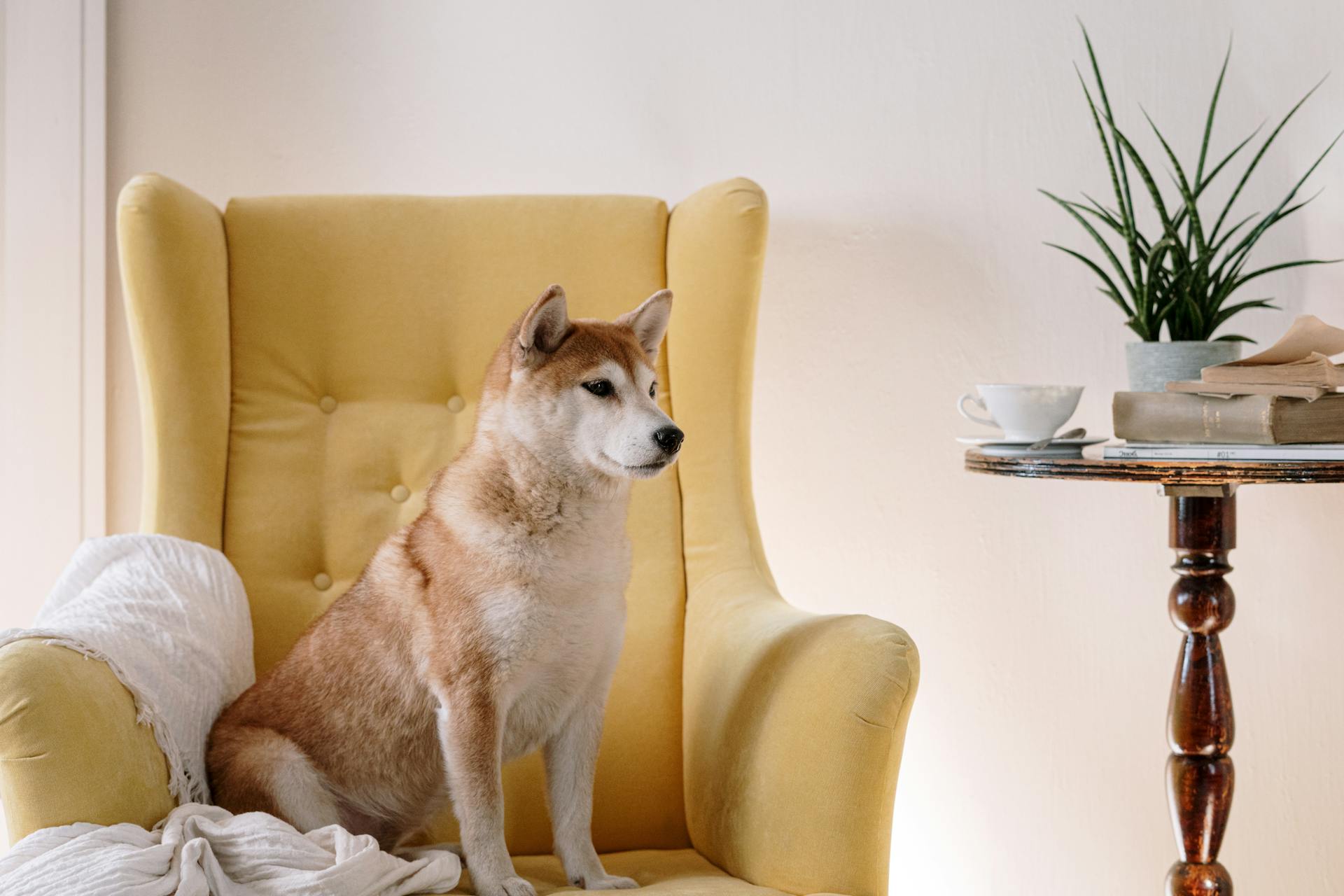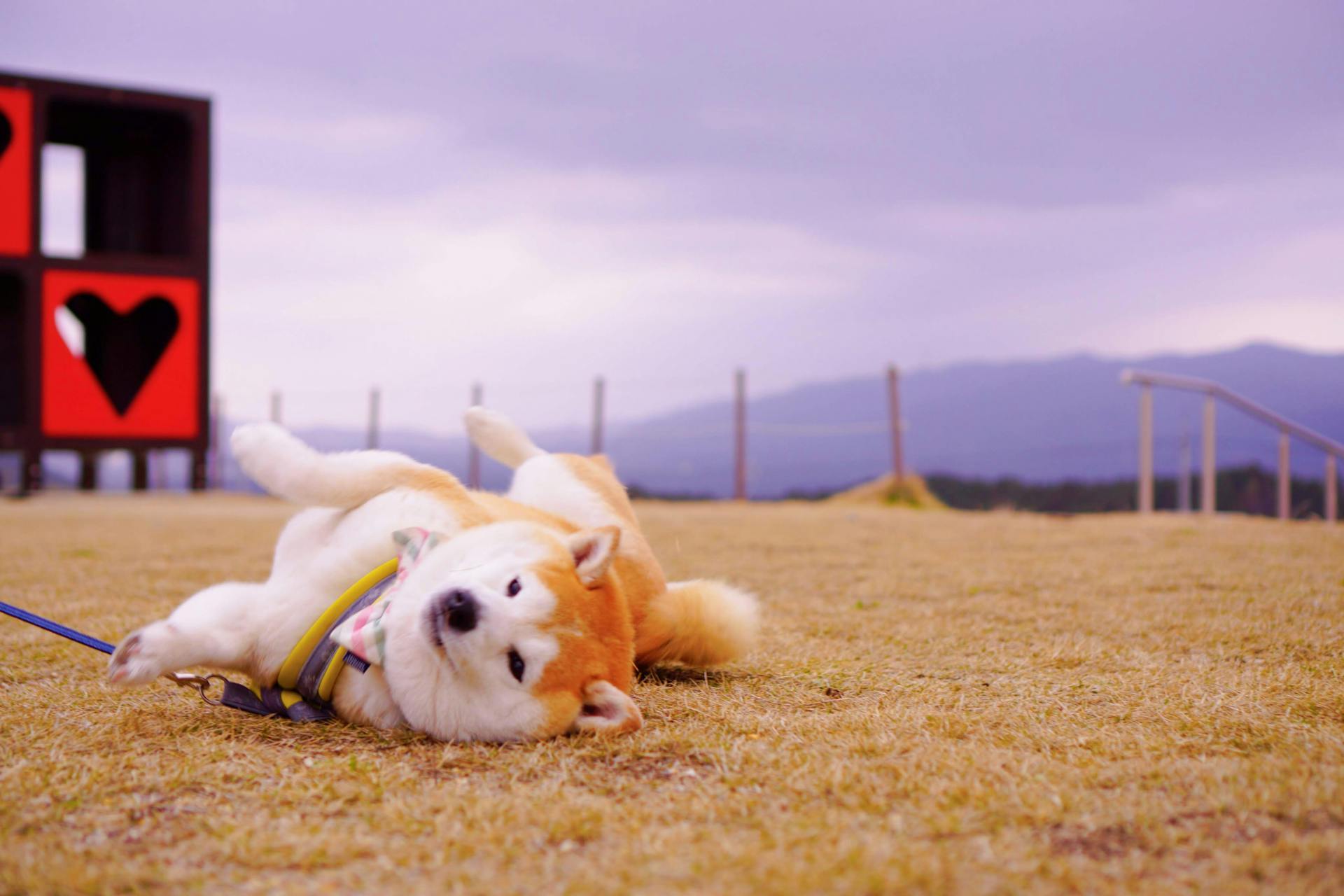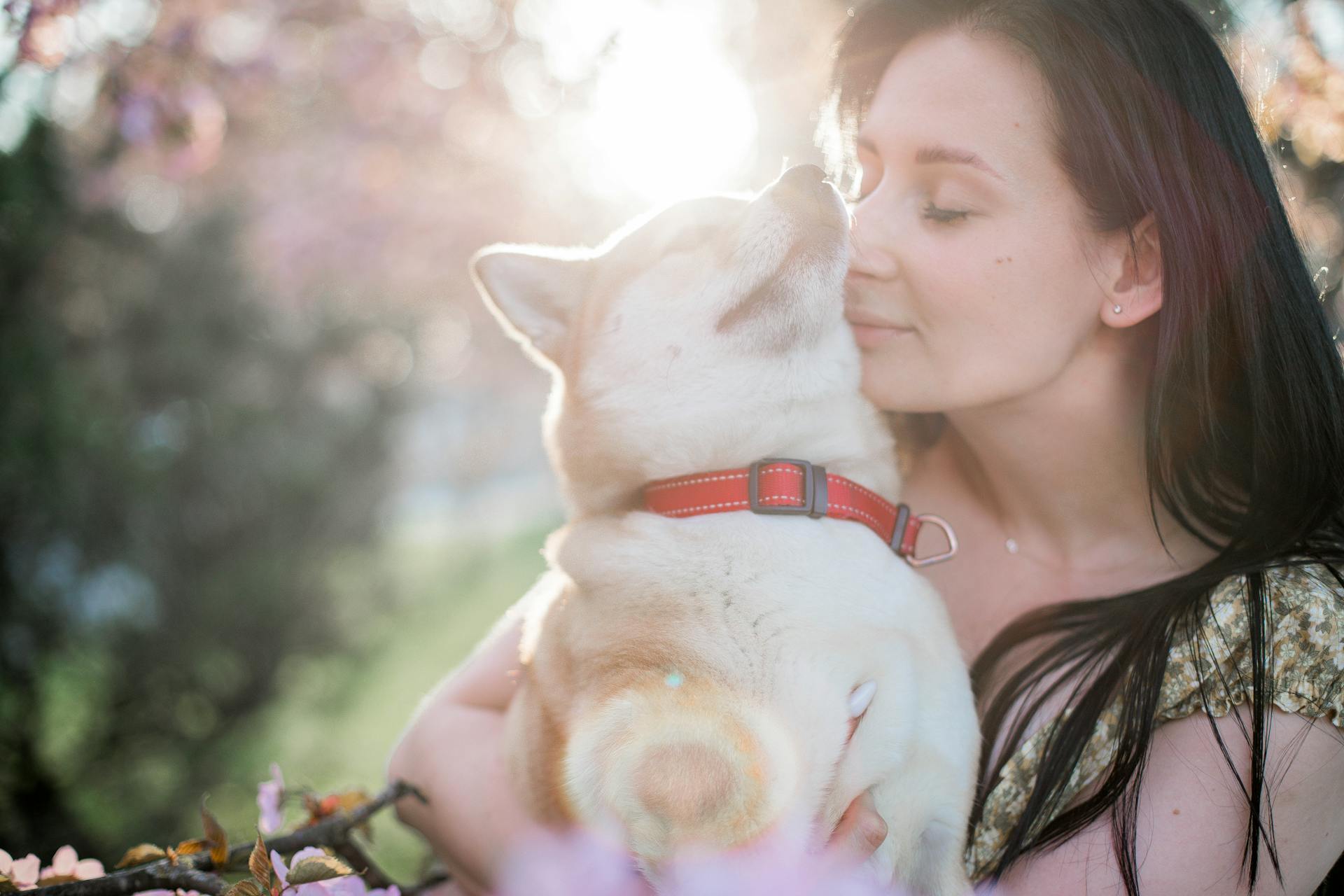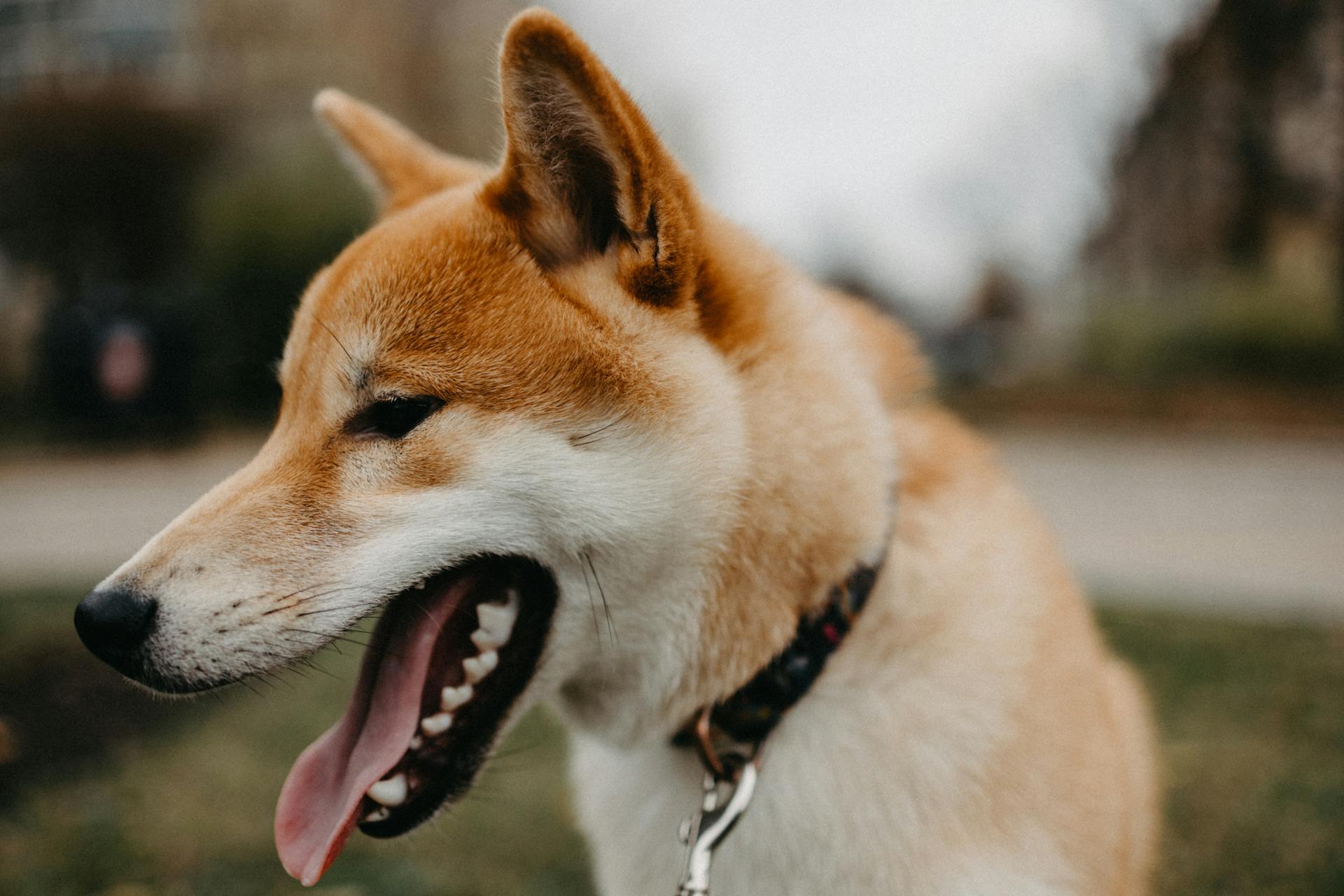
Welcoming a Shiba Inu puppy into your family can be a thrilling experience, but it's essential to be prepared for the responsibilities that come with it.
Shiba Inus are known for their strong-willed nature, so early socialization is crucial to help them develop good behavior and a strong bond with their owners.
Their small size, weighing between 15-25 pounds, makes them a great choice for city living, but they still require regular exercise to stay happy and healthy.
A daily routine that includes short walks and playtime can help keep your Shiba Inu puppy entertained and exercised.
Care and Upkeep
A Shiba Inu puppy is a bundle of energy, and they need plenty of exercise to stay happy and healthy. They require a daily workout, whether that's a game in the yard, a long walk, or a run in a fenced area.
Shibas are also known to be quite active mentally, so they benefit from games and agility work. This will keep them engaged and stimulated, and prevent boredom and destructive behavior.
Their double coat needs regular brushing to prevent matting and tangling. You'll need to brush them one or two times a week, or more often when they're shedding.
Daily brushing is also essential during shedding season, which can be a bit of a challenge. But with the right tools, like a hair dryer or dog-appropriate vacuum, you can make the process easier and less frustrating.
It's worth noting that Shibas are generally a healthy breed, but they can be prone to allergies and patellar luxation, a dislocation of the kneecap. So, be sure to keep an eye out for any signs of these issues.
Here are some key facts about the Shiba Inu breed:
- Height at withers: 13.5–16.5 inches (34–42 cm)
- Weight: 17–23 pounds (8–11 kg)
- Lifespan: 13–16 years
Neonatal Stage
The neonatal stage is a critical period for your Shiba Inu puppy. This is when they can't yet see but have already started the learning process.
Immediately after birth, your puppy will spend most of its time bonding and staying close to its mother and the other littermates.
A clean, warm, and comfy area should be provided for the mother and pups at all times.
Extra attention should be spent on ensuring that the mother is fed well, unstressed, and comfortable.
Begin handling the puppy to stimulate learning as well as get the puppy used to human handling and human sound.
Suggestion: Good Dog Treats Human Food
Transition and Socialization
As your Shiba Inu puppy grows, they'll go through several critical periods of transition and socialization. During the first 13-20 days, your puppy will start to hear and see, and will begin to urinate and defecate on their own. They'll also start to walk, albeit wobbly.
This is a great time to continue handling your puppy, exposing them to new noises and stimuli to encourage learning. Make sure anyone handling your puppy has clean, sterile hands and clothes, as they're not yet vaccinated.
Between 3-7 weeks, your puppy's vision and hearing will drastically improve, and they'll learn essential skills from their mother and littermates, such as barking, biting, and proper dog etiquette. It's essential to keep your puppy with their mother and littermates during this time, and to introduce new stimuli to aid in their learning.
Related reading: Shiba Inu 1 Dollar
Main Socialization 3-7 Weeks
During the main socialization period, from 3 to 7 weeks, your Shiba Inu puppy's vision and hearing drastically improve.
At this stage, the puppy will learn barking, biting, bite inhibition, posturing, and proper dog etiquette from its mother and other littermates.
The puppy's learning activity will accelerate at this time, and they'll understand the difference between good and bad experiences.
It's essential to keep the puppy with its mother and littermates during this time of socialization, as they learn vital social skills.
Puppies benefit from their mother's milk even though weaning starts during this period, so continue to provide it as needed.
More handling of the puppies is necessary, introducing new stimulus such as different noises, objects, and surroundings.
Be sure to include handling of the pup's mouth, teeth, gums, as well as their fur, paws, ears, etc.
Begin teaching the puppy to be isolated for very short bouts of time to help them adjust to being alone.
Curious to learn more? Check out: Will Shiba Inu Reach $1 Cent by 2025
This is also a good time to plan for the puppy's first veterinary visit and vaccinations, making sure to make the experience positive and cheerful.
Bring treats, toys, and warm blankets to ensure your puppy has the best experience ever.
Since the vet is a place the puppy will frequent in the future, it's essential to set a positive tone from the start.
14 Weeks 6 Months
Between 14 weeks and 6 months, your Shiba Inu puppy will be comfortable in its new environment and family. This is a great time to notice their personality and quirks.
Your puppy will start to test boundaries and challenge rules, so it's essential to be consistent and set clear expectations. Hypervigilance and management are key to preventing unwanted behavior.
During this period, your puppy's growth will increase exponentially, so take plenty of photos to capture this stage. Male puppies will start lifting their legs, so you'll need to train them on where this is acceptable and not.
Explore further: Shiba Inu to 1 Cent
Your puppy will also start getting adult teeth, which can be uncomfortable and may lead to destructive behavior. Provide plenty of chew toys and correct any destructive behavior immediately.
Prevention is the best method for handling destructive behavior, so ensure your puppy is never left in uncontrolled environments without supervision. This will make it easier to correct any mischief later on.
By 14 weeks, your puppy should have had all their initial vaccinations, and you can start heartworm prevention and flea/tick control.
A fresh viewpoint: Breeds of Dogs That Start with H
Frequently Asked Questions
Is Shiba Inu a good family dog?
Shiba Inus can be great family pets with older, dog-experienced children, but may not be suitable for very young children due to their energetic nature
How much should a Shiba Inu puppy cost?
A Shiba Inu puppy can cost between $1,400 to $3,500, depending on the breeder and bloodline. Adoption from shelters is also an option, with varying costs.
Is Shiba Inu a good dog?
Shiba Inus can make excellent pets for families with older, dog-wise children, but may not be the best fit for households with very small children or babies. They require regular exercise and training to thrive
Do Shiba Inus like to cuddle?
Shiba Inus are not typically open to free cuddles and often maintain a distance from unfamiliar faces. They may have a "no-cuddle zone" due to their independent nature.
Are Shiba Inus easy to train?
Shiba Inus are considered relatively easy to train, but their strong-willed nature can make training a challenge. With patience and consistency, Shiba Inus can learn and thrive with proper training.
Sources
- https://www.petfinder.com/dogs-and-puppies/breeds/shiba-inu-dogs-puppies/
- https://myfirstshiba.com/my-very-first-shiba-puppy/shiba-inu-puppy-life-stages-development/
- https://www.istockphoto.com/photos/shiba-inu-puppy
- https://www.dogster.com/lifestyle/shiba-inu-puppies-puppy-pictures
- https://www.britannica.com/animal/shiba-inu
Featured Images: pexels.com


